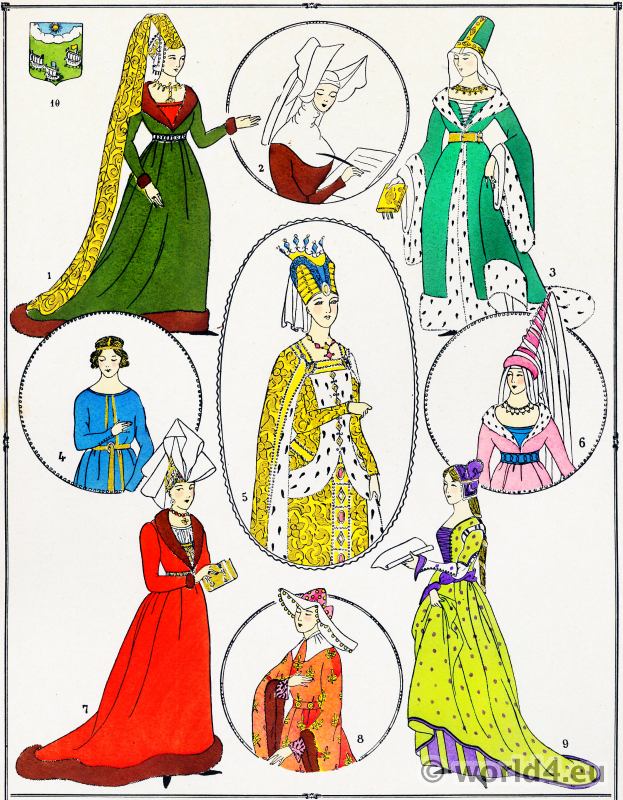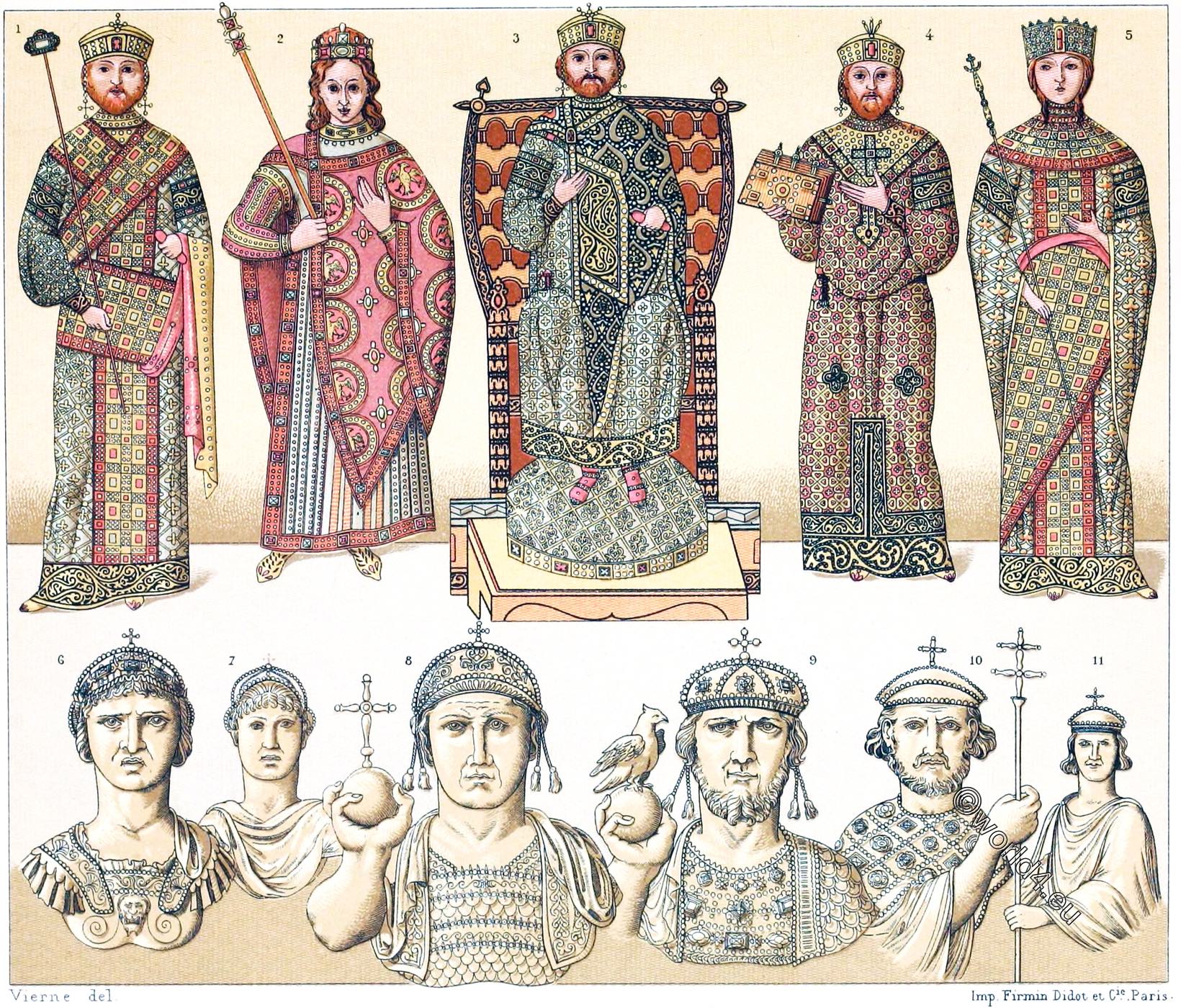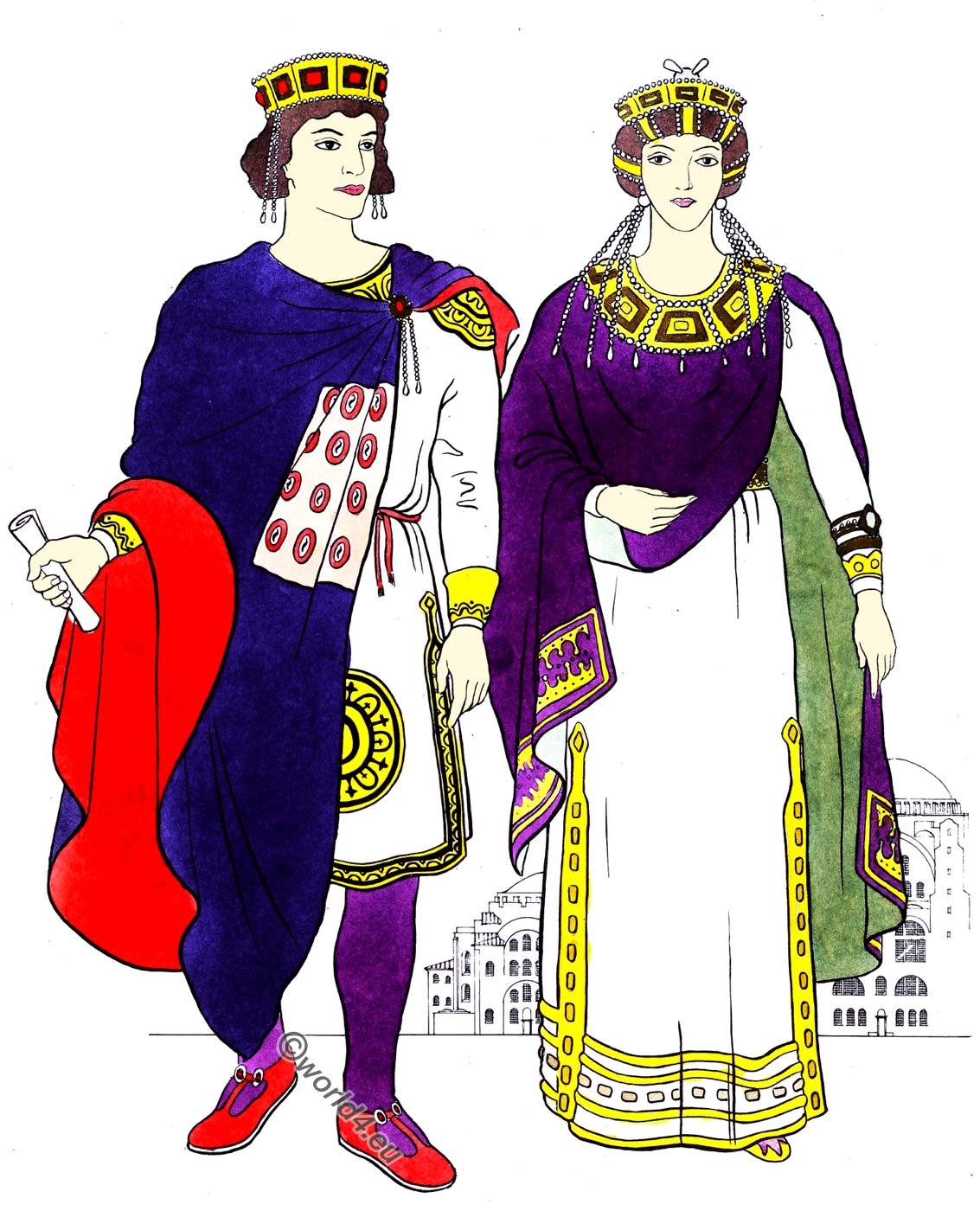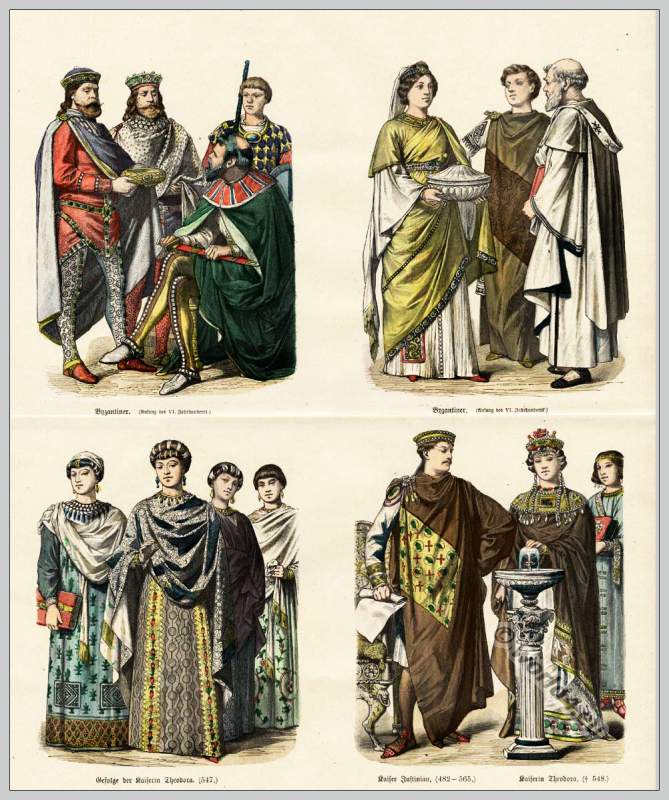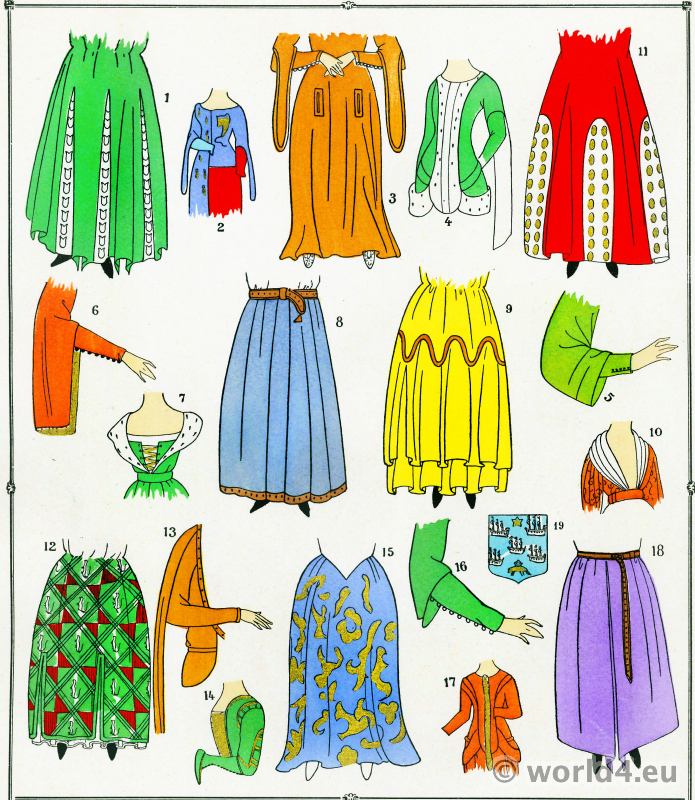BYZANTINE – PLATE NO. 18
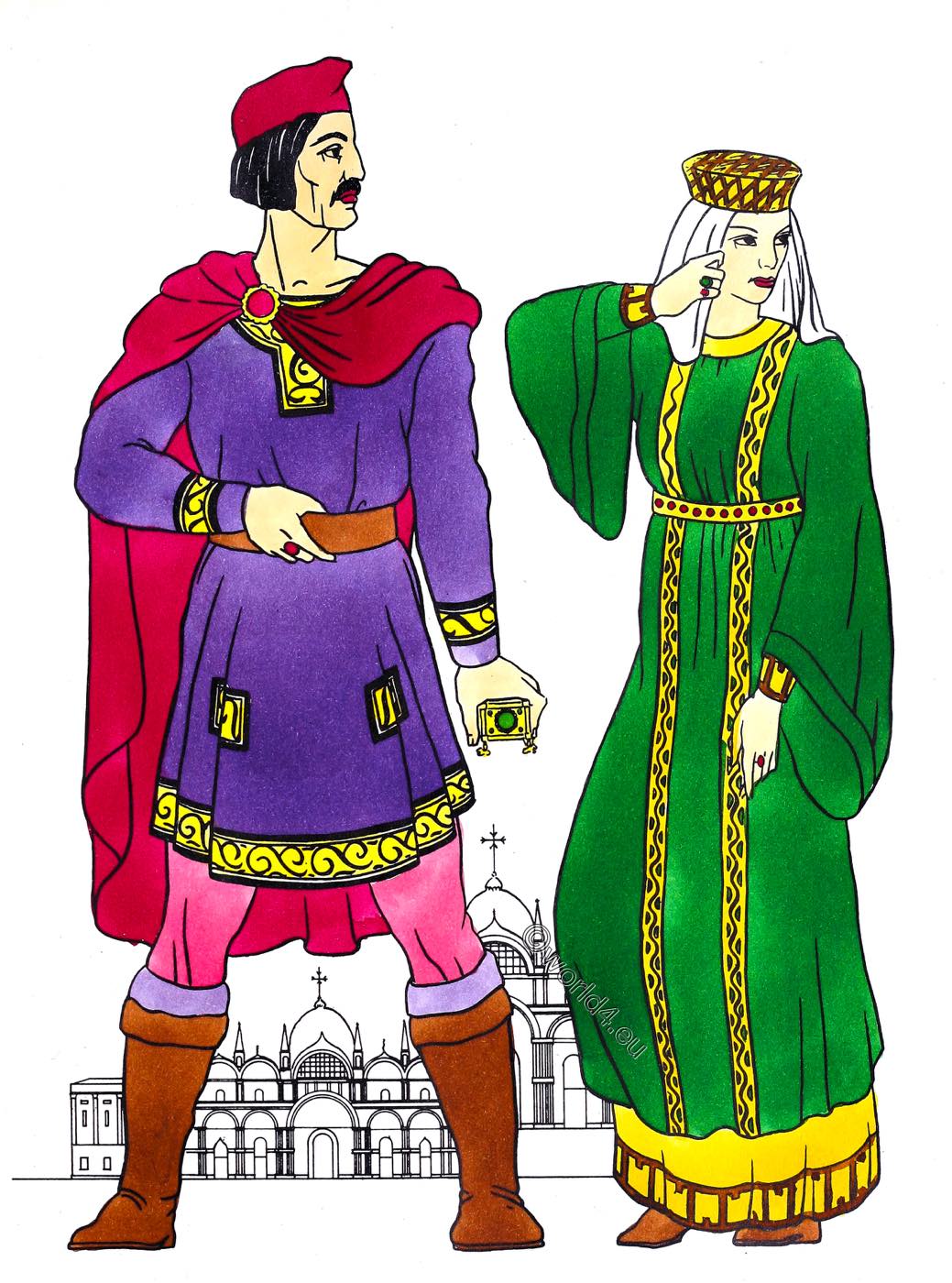
Byzantine Middle Class. 400 A.D. – 1100 A.D.
Byzantine costume was the dress of the world after the fall of Rome. The capitol of the Roman Empire was shifted to Byzantium (Constantinople), and gradually the Greek-like garments of the Romans were changed somewhat by the Oriental influence. In that part of Western Europe which Rome had conquered, the dress, from about the sixth to the eleventh century, differed from Byzantine only in ornament and minor details. The man and woman shown here could easily be Saxons or Frank of the ninth or tenth century.
When the fashion center moved eastward, the men began to wear their hair longer, very much like a modern straight “bob.” This man is wearing a model of the Phrygian bonnet that we found in Plates 5 and 6. It is probably made of soft felt. He has a rather short tunic, no different from the Roman tunic except, at times, in the sleeve cut. Its pattern is that of a “T” with the sleeves either set in straight at the shoulder or else cut in one piece with the body. His legs are covered with what could be either a pair of long Roman braccae or long stockings that were called hosa. They are probably the former, since over these he is wearing an added pair of hosa; the tops of which can be seen turned over the turned-down tops of his high soft leather boots. Whatever their name, hosa or braccae, they are made of cloth, and are cut and tailored to fit the legs quite closely. His cloak, an essential part of the costume, is worn indoors as well as out.
The cloak shown is rectangular and of medium size, and is pinned on the right shoulder with a large brooch. Note the characteristic Byzantine decoration on the edges of the tunic. The two little squares on the lower front of his skirt are known as segmentae and are visible everywhere in Byzantine costume. If a beard, mustache, or both were worn, they were neatly trimmed.
The woman is wearing a long-skirted tunic just like the man’s, only longer. Over this she is wearing a kimono-sleeved, shorter tunic taken from the Roman dalmatic. The two vertical stripes, which the Romans called clavi, were very popular. She has bound her hair up, probably in plaits; and is wearing a small box-like headdress, which is almost always accompanied by a veil that hangs down all around the head. Her shoes are simple ones of soft leather.
Note all the jewelry and the rich colors. Byzantine dress made use of a great variety of materials from the Orient, and the ensembles are rich with color and jewels.
Source: Museum Extension Project. History of Costume.
Related
Discover more from World4 Costume Culture History
Subscribe to get the latest posts sent to your email.

